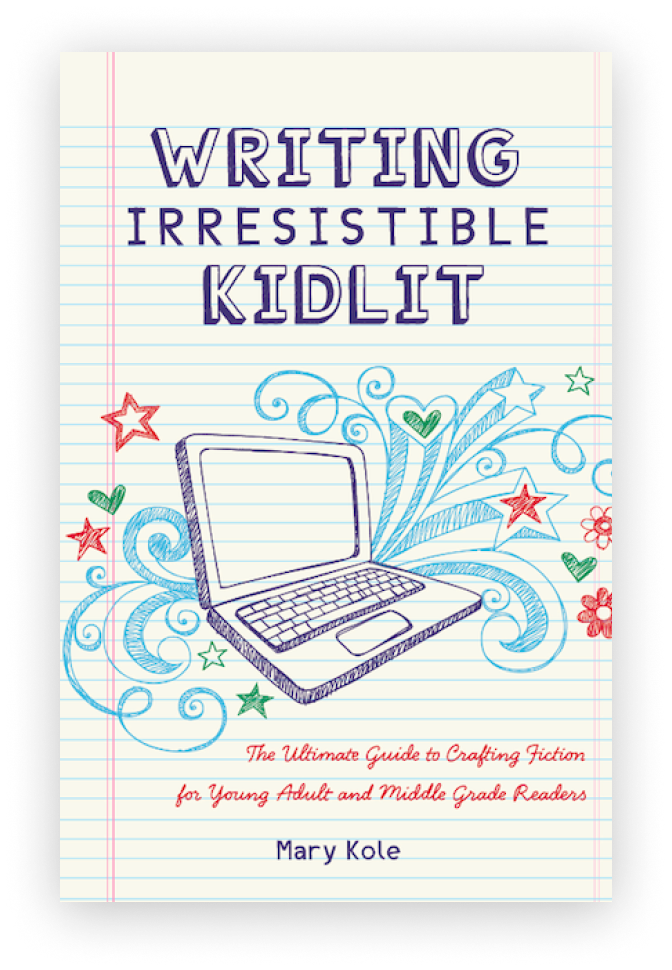Ten Tips for How to Start a Novel
By Mary Kole
Mary Kole is a former literary agent, freelance editor, writing teacher, author of Writing Irresistible Kidlit, and IP developer for major publishers, with over a decade in the publishing industry.
Many writers wonder how to start a novel, and that’s only natural, as a story’s beginning is one of its most important elements—and what agents and publishers will evaluate. Embarking on the journey to write a novel can be both exciting and daunting. One of the most critical elements that can make or break your prospects is how to start a novel project. It's the door that opens up to the world you're creating and the invitation for readers to immerse themselves in your story. As a former literary agent with over a decade in the publishing business, I've compiled ten detailed tips for how to start a novel on the right foot.
How to Start a Novel
Start with a hook: The opening sentence or paragraph of your novel should be attention-grabbing and intriguing, but not vague or cryptic. It should give readers a glimpse of what's to come while opening a loop of mystery or suspense that readers will want to close. Avoid clichéd novel openings or immediate backstory, which will kill your pacing.
Introduce your protagonist: The first chapter should introduce the main character and their world. Give readers a sense of what the protagonist's life is like and what drives them, or their motivation.
Set the scene: Describing the setting can help transport readers into the world of your story. Make sure to add sensory details to your worldbuilding, which will make the environment come alive for the reader.
Establish the central conflict: By the end of the first chapter, readers should have an idea of both the internal conflict and the external conflict that your protagonist is facing. This doesn't mean you have to reveal everything all at once, but giving readers an idea will set the stage for the rest of the story and is how to start a novel on the right foot.
Show, don't tell: Avoid overloading the reader with information about the characters or plot, and especially don’t explain these details. Instead, show the character's thoughts and feelings using interiority, and showcase their actions to allow readers to understand what's going on.
Avoid the backstory dump: It's tempting to explain the character's history, but too much of it can slow down the story's momentum. Instead, sprinkle details throughout the first pages, and build more backstory in the first chapters. You can’t to everything at once in how to start a novel, and it’s okay to slowly roll information out.
Use strong verbs: Weak verbs like 'was' or 'had' can make the narrative feel flat. Try to use active descriptions that make the scene come alive for readers. It’s possible to overdo this, however, so make sure your word choice seems natural, rather than contrived or overwritten, which will veer into purple prose.
Use the right point of view: Your choice of point of view can significantly affect the story's impact. Make sure to choose the one that fits your character and the story's purpose. You’ll also want to make sure your POV choice is consistent with genre tropes and expectations for your project.
Incorporate foreshadowing: Include hints or clues about what's to come or what might happen next. This can help get the reader emotionally invested and keep them engaged. Many writers forget to tease a bit when wondering how to start a novel.
Keep it tight: Cut out any excess material that doesn't add to the story—or at least to readers’ initial understanding of the story. Aim for concise and vivid prose that moves the story forward, keeping an eye on pacing. This is critical in learning how to start a novel that keeps readers turning the page.
Advice for How to Start a Novel
A well-crafted first chapter can set the tone for the rest of the story and keep the reader engaged. By learning how to start a novel using the above tips, you'll be on your way to creating a captivating and dynamic first chapter that hooks the reader from the very first paragraph.
As a writer, it's crucial to remember that your first draft will rarely be perfect. Take your time and revise until you're happy with the opening. Some writers don’t even worry about how to start a novel and skip over the first chapter in their manuscript altogether. It’s perfectly okay to write a placeholder opening, then come back to it later, once you’ve started revising. Remember that writing a novel is a journey, and the more you enjoy it, the better your experience—and the manuscript—will be.

Click here to purchase Writing Irresistible Kidlit, my book on fiction craft for MG and YA novels, out from Writer's Digest Books. This will show you my writing craft philosophy and give you lots of valuable advice, including tips for the novel revision process and self-editing. There are over 35 example novels cited and discussed throughout. It’s a valuable resource for any writer’s toolkit.
Click here to purchase Irresistible Query Letters, my book on query letters, including over forty examples with comprehensive notes on each one. There’s a ton of submission advice, best practices, and insider information in these pages, and you’ll really enjoy seeing what other writers are doing in the slush.
Click here to purchase Writing Interiority: Crafting Irresistible Characters, my book on interiority and character creation. Explore your protagonist’s thoughts, feelings, reactions and interpretations, expectations, and inner struggles to create a rich, immersive experience. This guide will empower you to create characters who live and breathe on the page, fostering an unbreakable bond with your audience.





